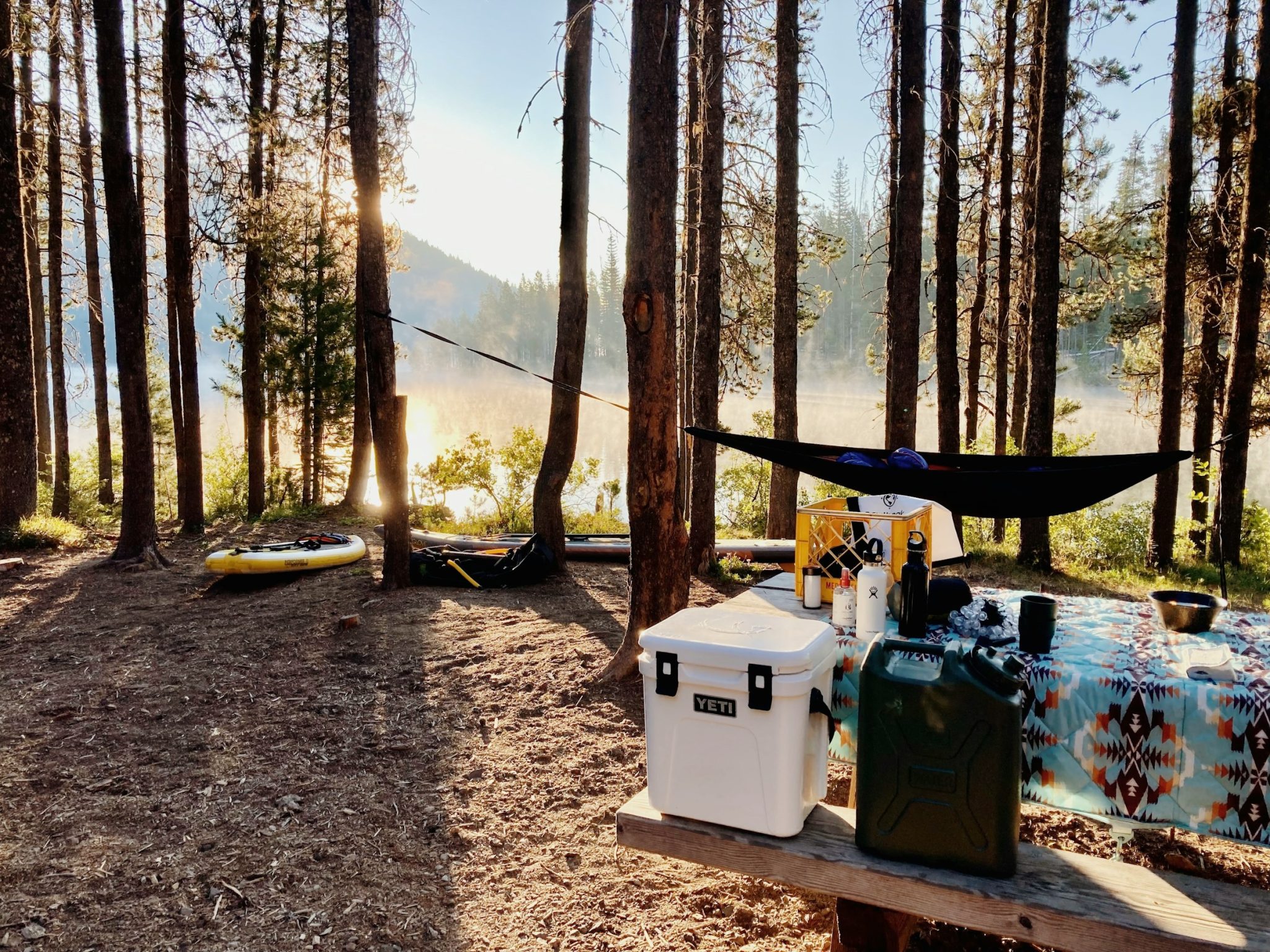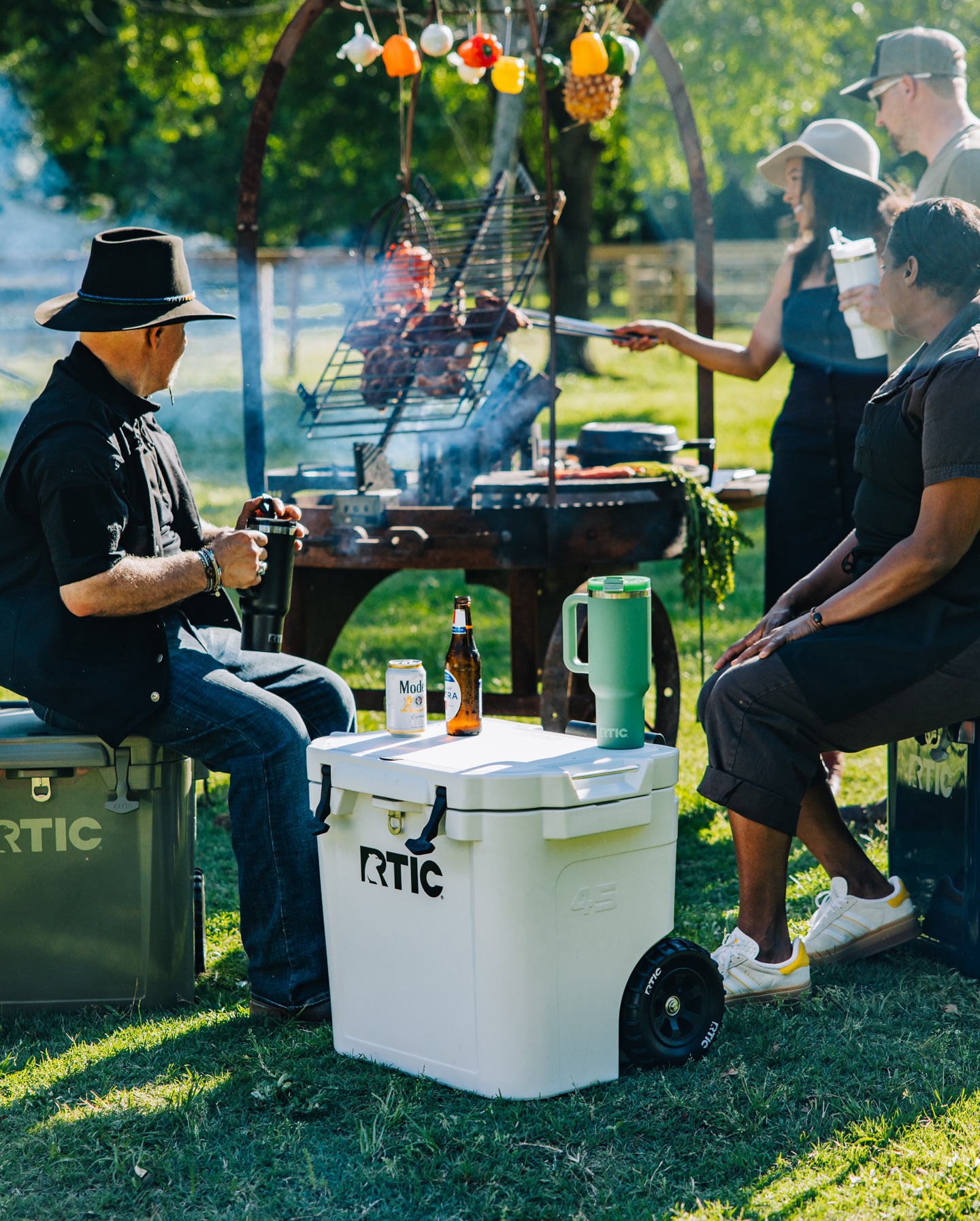Shopping for coolers and ice chests that stays cool is fraught with choices, especially if you’re an outdoor enthusiast like me. I’ve spent countless days paddleboarding, kayaking, and lounging in the hot California sun, and a reliable cooler is essential for keeping drinks cold and food fresh. I always carry cold beverages and fresh guacamole with me, and keeping them at an enjoyable temperature is paramount. Understanding the different types of insulating materials is key to making an informed choice in purchasing an ice chest that will actually stay cool.

Table of Contents
Ice Cold in a Material World
Cheaper hard coolers often use styrofoam (extruded polystyrene) for insulation. While this material is lightweight and cost-effective, it pales in comparison to the insulation power of premium coolers.
These higher-end coolers, such as those made by YETI or RTIC or ORCA, utilize heavier but far more effective polyurethane. Lower-end coolers typically lack insulation in their lids, featuring merely an air cavity, which significantly reduces their overall effectiveness.
One summer, during a particularly grueling paddleboarding trip, I realized the importance of proper insulation. My bargain cooler couldn’t keep up with the blazing sun, and my ice melted within hours. That’s when I decided to invest in a premium hard-sided cooler. These coolers employ polyurethane foam, which is denser and filled with smaller air bubbles.
This foam is pressure-injected into a cooler mold, eliminating all air gaps with up to two inches of insulation. The hard-setting nature of polyurethane not only enhances insulation but also adds structural strength, making these coolers exceptionally durable.
The combination of superior insulation, rotomolded construction for thicker walls, and additional features like high-end silicone rubber gaskets and Bearclaw lid latches enables these coolers to achieve high ice retention. On my next kayaking trip, my cooler kept my food and beverages cold for the full day, even under the relentless sun and 100+ degree temperatures.
Navigating the world of insulation can be perplexing, with a variety of materials (cellulose, fiberglass, rock wool, expanded polystyrene/EPS board, extruded polystyrene/XPS board, polyurethanes, etc.) and numerous methods for measuring insulating power.
Many testing methods lack objectivity, leading to misleading and biased information. However, polyurethanes have consistently proven to be among the best insulating materials.
A reliable method for comparing insulation materials is to measure their thermal conductivity, also known as the lambda value. This metric reflects the rate at which heat passes through a material, expressed in watts per square meter of surface area for a temperature gradient of one Kelvin per meter of thickness (W/m-K). Lower thermal conductivity indicates better thermal efficiency.
When shopping for a cooler, looking for those with low thermal conductivity will ensure better performance in maintaining low temperatures.
Shopping for a cooler involves more than just picking one off the shelf. It’s about understanding the technology behind it and selecting a cooler that fits your needs, whether it’s for a weekend camping trip or an extended outdoor adventure.
From insulation type to build quality and additional features, these aspects play a crucial role in ensuring your food and beverages stay cool for as long as you need. For me, the switch to a premium cooler made all the difference in my outdoor experiences, allowing me to focus on the adventure without worrying about my provisions.
Identifying Quality and Features
As long as you’re buying an ice chest with rotomolded cooler technology, you’re on the right path.
In a study by ORCA, the company found there is no difference in performance between darker coolers (like black, navy, and green) and lighter coolers (like white and light blue).
Some other key features I look for in hard coolers are a drain plug and wheels. I’ve used a variety of coolers over the years, and making sure the hard cooler has both is essential.
Drain plugs are great both for managing ice melt and cleaning when done.
Wheels are an essential for the weight and moving coolers longer distances, which seems to happen a lot more often than you might plan for.
When shopping for rotomolded ice chests, you might be wondering what the difference is between the premium brands like Yeti and RTIC, versus cheaper brands at Walmart, Hoem Depot, Cabelas, etc. It comes down to the overall build quality. How well made are the handles and hinges? Are the non-essential features built to take a beating?
All the hard coolers below will be able to keep your food and drinks cold for days on end. When shopping for soft sided coolers, don’t expect the same results. Plan for a day at best. Its simply the nature of how they are made and physics. ORCA does have one of the better options, with an insulted lid over zipper.
Brands to Look For
No matter which brand, one of the keys to keeping your ice chest cold, is to pre-chill it. If you are storing your cooler in a hot garage, you’re immediately reducing your chill time by hours. If you have the space, put it in the freezer overnight. At the very least, keep it in your house.
Igloo
Look for hard coolers using THERMECOOL insulated lid and body to provide up to 5 days of ice retention in 90F heat
Thermecool is Igloo’s proprietary insulation technology designed to significantly reduce environmental impact while providing superior cooling performance. Developed in collaboration with BASF, Thermecool insulation is an advanced foam that is 50 times better for the environment than the standard foams previously used.
The environmental benefits of Thermecool are substantial. By utilizing this eco-friendly foam, Igloo significantly cuts down on greenhouse gas emissions during the production process. Additionally, Thermecool meets stringent California air quality regulations, making it a model for sustainable manufacturing practices in the cooler industry.
Beyond its environmental advantages, Thermecool does not compromise on performance. The insulation properties of Thermecool foam enhance ice retention, ensuring that contents stay colder for longer periods, which is crucial for outdoor activities like camping, kayaking death valley, and paddle boarding, especially under the hot sun.
Made in the USA, ORCA claims their coolers can last up to 10 days. To get this close, the company has a guide for prepping your cooler.
To ensure optimal performance, we recommend pre-chilling your cooler by placing a bag of ice, ice blocks, or frozen water jugs inside it approximately 12-24 hours prior to usage. This process helps to cool down the foam in the walls. The following morning, the ice will likely have melted. Simply remove the water and proceed with packing your cooler. We suggest layering your items, starting with ice, adding your items, and then adding more ice. The key is to fill the cooler completely, eliminating any warm air. Additionally, it is crucial to keep your cooler away from direct sunlight and ensure that the latches are securely fastened.
RTIC

RTIC coolers have become a favorite among outdoor enthusiasts due to their remarkable balance of performance and affordability. These coolers leverage advanced rotomolded construction, ensuring a virtually indestructible and highly durable body.
The thick walls are filled with commercial-grade polyurethane foam, which provides superior insulation and keeps contents cold for extended periods. RTIC coolers also feature heavy-duty rubber T-latches and a freezer-grade gasket that create a secure and airtight seal, maximizing ice retention.
Their no-sweat exterior ensures the cooler stays dry on the outside, preventing moisture buildup. With features like molded tie-down slots, a quick-drain system, and non-slip feet, RTIC coolers offer practical and convenient solutions for keeping food and drinks cold, making them an excellent choice for both casual picnics and rigorous outdoor adventures.
RTIC claims up to 5 days of cold if you follow all of their tips here.
Yeti
YETI coolers have earned their reputation for superior cooling performance thanks to their exceptional design and construction. The secret lies in their use of rotomolded construction and thick walls filled with pressure-injected polyurethane foam, providing unparalleled insulation.
This robust build, combined with a seamless, one-piece construction, ensures that there are no weak points where heat can infiltrate. Additionally, YETI coolers feature heavy-duty rubber T-Rex lid latches, an Interlock lid system, and a ColdLock gasket that work together to create an airtight seal, further enhancing ice retention.
The attention to detail extends to their Bearfoot non-slip feet, which keep the cooler in place, and their Vortex drain system for easy, leak-proof drainage. All these features make YETI coolers highly effective at keeping contents cool, even in the most extreme outdoor conditions.
Yeti doesn’t claim how many days their coolers last, but you can find frequent accounts of 5-10 days when properly pre-cooled.
Essential Accessories
Marine Grade Zipper and Snap Lubricant – This Marine-grade zipper and snap lube wax stick prevents metal and plastic snaps from getting stuck and keeps zippers, drawers, windows and more running smoothly. The clear formula won’t stain fabrics as it keeps closures opening and closing smoothly for months. This marine zipper lube is perfect for the snaps on canvas boat covers, as a wetsuit lubricant , Jeep wrangler zipper lube and as a part of a plastic zipper repair kit for jackets. This product comes from a family owned American business committed to making premium quality products. Made in the USA.
- About the Author
- Latest Posts
I strive to paint vivid landscapes with my words, bringing the magic of far-off lands and enchanting aromas to life for my readers. Combine passion for exploration and the art of gastronomy in an unending ode to the senses. When I’m not traversing the globe, I find solace in the earth beneath my fingertips, tending to my garden and working on projects around my verdant oasis. MK Library serves as a beacon, guiding fellow travelers and homebodies alike to embrace sustainability, nurturing both our planet and our souls with purpose. Full Bio.




